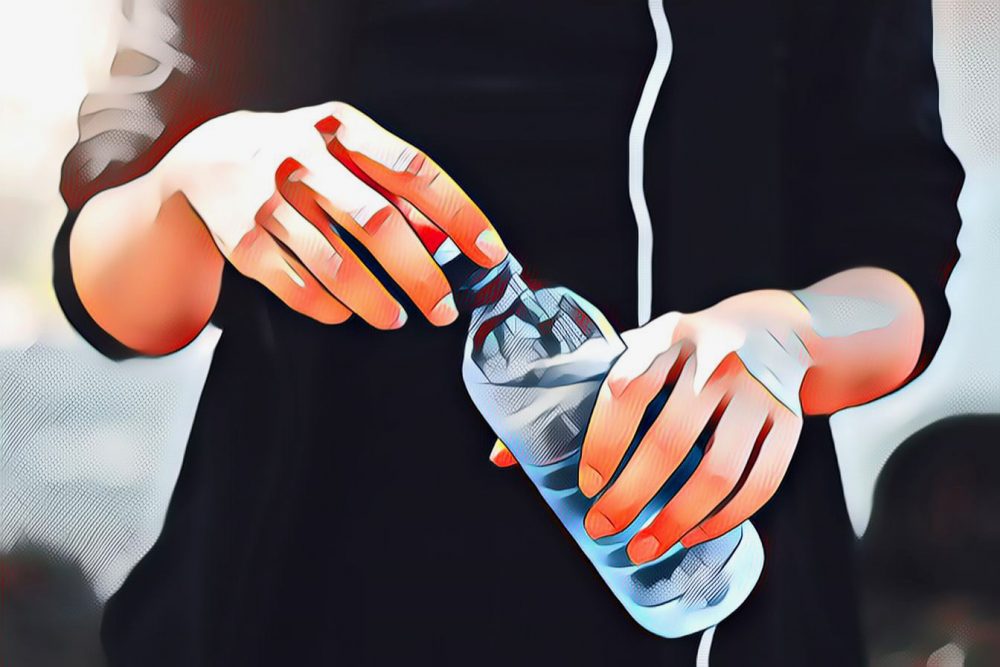The Cetie “Single-Use Plastic (SUP)” group has been working for almost four years on this topic, related to European Directive 2019/904 “on the reduction of the impact of certain plastic products on the environment”, better known as the Single-Use Plastic Directive (SUPD). Starting in 2018, before the directive was even published, Cetie had begun drawing up a normative response to Article 6 of the directive, which requires plastic bottles to have caps that remain attached to the bottles, from 2024 onwards.
On the basis of Cetie’s proposal, and the tests performed by the members of the “SUP” group, the European Committee for Standardization (CEN) took the reins to reach the stage of the first official project, at the end of 2020. In line with CEN rules, this project was the subject of an initial “substantive enquiry” in 2021, then a “formal enquiry” was launched in the second quarter of 2022 after evaluation of feedback from participating countries, leading in turn to comments from the different European countries. Once these comments are resolved, the document will finally be ready for publication, entitled “Packaging — Test methods and requirements to demonstrate that plastic caps and lids remain attached to beverage containers”. This publication should take place in just a few months. As this “harmonised” standard is a response to an official request from the Commission made to CEN in 2020, a stage for assessment by the Commission is still necessary before publication in the Official Journal.
In the course of these enquiry phases, Cetie’s editorial activity regarding the standard itself was reduced, and the group was able to work on a complementary document, Cetie Guide No. 15, intended to clarify and provide guidance to users of the standard in its practical application. Furthermore, within the group, participants discuss topics relating to regulations and the environment. These topics are increasingly dense and complex, making it difficult for everyone to monitor and analyse. Information sharing is therefore extremely helpful, as is work on interpreting the texts.
Large numbers of changing regulations that are sometimes difficult to interpret
Regulations have a significant impact on products and manufacturing systems, so it is critical to detect projects as early as possible in order to best understand them and to have the time to adapt to them, or even – for the most open projects – to have the opportunity to influence them.
For example, the “Packaging and Packaging Waste” Directive, initially dating from 1994, is to be updated in the European Commission’s current legislative period. The first draft is expected for this autumn, and will be scrutinised with the greatest attention by all stakeholders in the packaging industry, and by the Cetie SUP group in particular. The Commission is, incidentally, undecided between replacing it with a Directive (a more general text that is then transposed into the law of each member country) or with a Regulation (an act that applies directly to each country as it is).
Some directives also set targets: percentages of recycled material integrated into products, percentages of products reusable on the market, etc. There are systematic issues with precise definitions regarding these rates. For example, Article 6 of the SUPD sets the requirements for a mandatory minimum content of recycled plastic in PET bottles: 25 % in 2025 and 30 % in 2030. However, Eunomia, an association responsible for doing prior groundwork on topics, consulting and making proposals to the Commission, considers that this rate must be calculated by dividing the weight of recycled material by the total weight of the packaging: PET bottle + closure + label. This noticeably reduces the result. To achieve a rate of 25 %, for example, much more recycled PET is required.
Dynamic standardisation
The European Commission has also urged manufacturers involved with plastic to work on standards, as part of the “European Strategy for Plastics in a Circular Economy”, adopted in early 2018. An initiative called the Circular Plastic Alliance was therefore formed in 2020, which has proposed a set of standards numbering in the dozens and covering the whole sector. Many of these standards concern plastic packaging. The Commission has just initiated official standardisation requests to CEN. The standards to be developed by the CEN packaging technical committee concern:
- The processes and criteria for assessing the recyclability of plastic packaging
- The design for recycling plastic packaging products
- The standardisation study on PET bottle recycling, by the International Organization for Standardization (ISO),
- The standard on recycled content, by the British Standards Institution
Packaging 360 is a comprehensive knowledge sharing ecosystem for the Indian packaging industry. Our services include an online content platform to deliver news, insights and case studies; organising conferences seminars and customised training; Providing Bespoke Project Consulting, Market Research and Intelligence.







